
Economics_-_New_Ways_of_Thinking
.pdf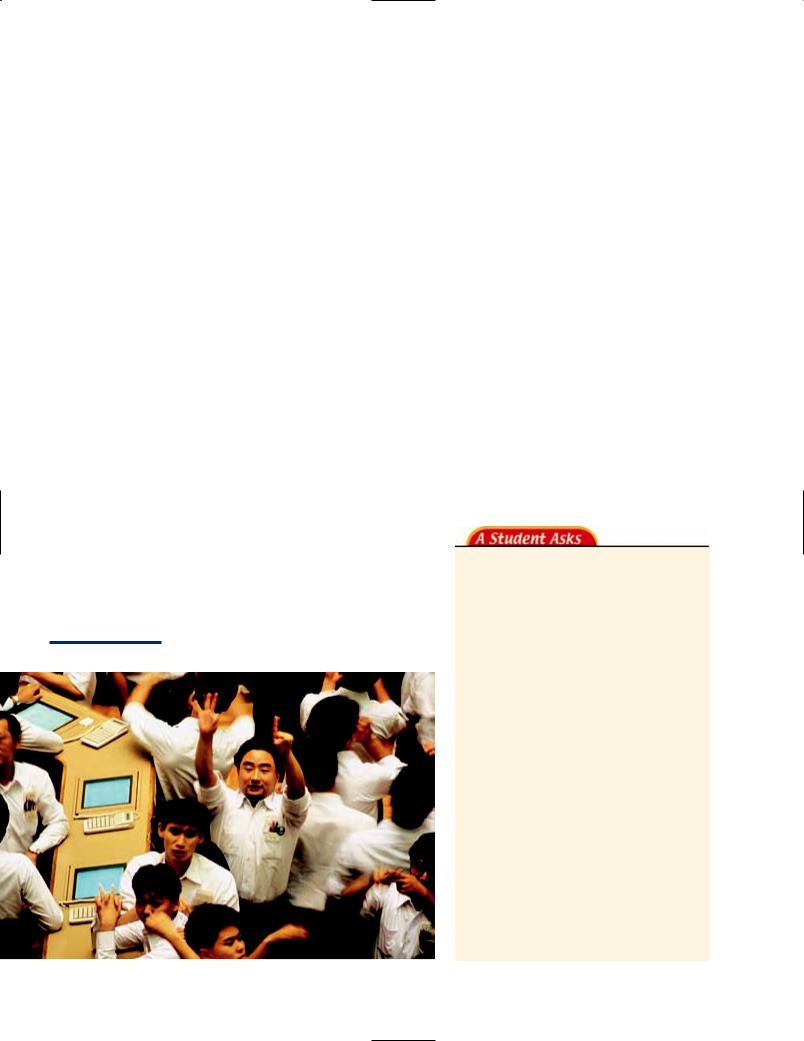
option
Contract that gives the owner the right, but not the obligation, to buy or sell shares of a good at a specified price on or before a specified date.
If these traders are buying call options, do their clients already own the stock in question? Why do you think someone would buy an option on a stock rather than the stock itself?
Options
An option is a contract that gives the owner of the option the right, but not the obligation, to buy or sell shares of a stock at a specified price on or before a specified date. The two types of options are calls and puts.
Call Options
Call options give the owner of the option the right to buy shares of a stock at a specified price within the time limits of the contract. The specified price at which the buyer can buy shares of a stock is called the strike price. For example, suppose Brown buys a call option for $20. The call option specifies that she can buy 100 shares of IBM stock at a strike price of $150 within the next month. If the price of IBM stocks falls below $150, Brown doesn’t exercise her call option. She simply tears it up and accepts the fact that she has lost $20. If she still wants to buy IBM stock, she can do so through her stockbroker as she normally does and pay the going price, which is lower than $150. If the price rises above $150, she exercises her call option. She buys the stock at $150 a share and then turns around and sells it for the higher market price. She has made a profit.
If Brown buys a call option, then someone must sell it to her. Who would sell her a call option? Any person who thought the option wouldn’t be exercised by the buyer. For example, if Jackson believed that the price of
IBM was going to fall below $150, then he would gladly sell a call option to Brown for $20, thinking that the option would never be exercised. That’s $20 in his pocket.
Put Options
Put options give the owner the right, but not the obligation, to sell (rather than buy, as in a call option) shares of a stock at a strike price during some period of time. For example, suppose Martin buys a put option to sell 100 shares of IBM stock at $130 during the next month. If the share price rises above $130, Martin will not exercise his put option. He will simply tear it up and sell the stock for more than $130. On the other hand, if the price drops below $130, then he will exercise his option to sell the stock for $130 a share. Who buys put options? People who think the price of the stock is going to decline.
Who sells put options? Obviously, the people who think the price of the stock is going to rise. Why not sell a put option for, say, $20, if you believe that the price of the stock is going to rise and the buyer of the put option is not going to exercise the option?
QUESTION: I’ve heard some people talk about getting part of their pay or a bonus in the form of stock options. I’ve heard that some people make a lot of money through stock options. What are these options?
ANSWER: A stock option gives an employee the right to buy a specific number of shares of stock at a price specified by the employer. The “price” specified by the employer is often the current market price of the stock when the stock option is issued. The hope for the employee is that the market price will rise over time. For example, if the stock option specifies the price of $10 a share, the employee has the right to buy the stock at $10. Now suppose time passes and the market price of the stock rises to $40. What can the employee do now? He or she can buy the stock for $10 a share and then turn around and sell it for $40 a share.
454 Chapter 16 Stocks and Bonds
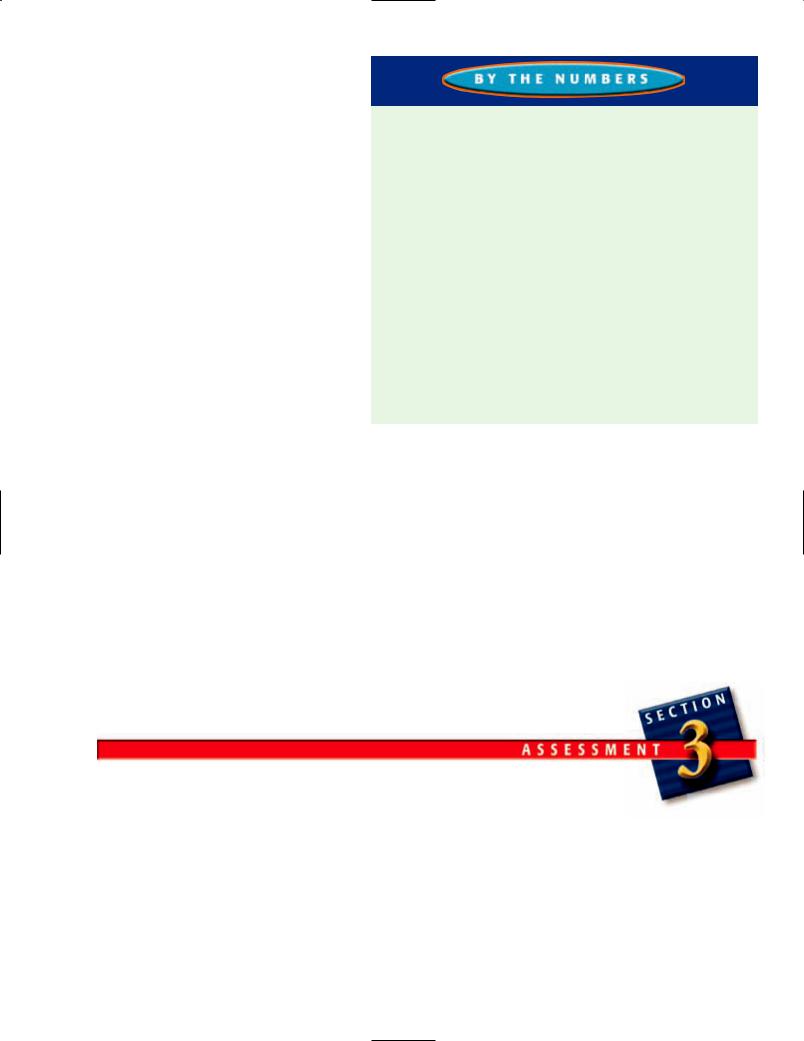
How You Can Use Call and
Put Options
Suppose you think a certain stock is going to rise in price during the next few months. Currently, the stock sells for $250 a share. You don’t have enough money to buy many shares of stock, but you would like to benefit from what you expect will be a rise in the price of the stock. What can you do? You can buy a call option. A call option will sell for a fraction of the cost of the stock. So, with limited resources, you decide to buy the call option, which gives you the right to buy, say, 100 shares of the stock at $250 anytime during the next three months.
Wait a minute. If you don’t have the money to buy the stock at $250 a share now, why does anyone think you will have the money to buy the stock at $250 in a few months? Well, you don’t have to buy the stock. If you are right that the price of the stock will rise, then the call option you are holding will become worth more to people. In other words, if you bought the option when the price of the stock was $250, and the stock rises to $300, then your call option has become more valuable. You can sell it and benefit from the uptick in the price of the stock.
Alternatively, let’s say you expect the price of the stock to fall. Then you can buy a put option. In other words, you buy the right to sell the stock for $250 anytime during the next three months. If the price does fall, then your option becomes more valuable. In fact, the further the price falls, the more valuable
The left side of the following table shows the top 10 days for the largest point gains in the Dow. For example, the Dow went up by 499.19 points on March 16, 2000. Keep in mind that the largest point gain in a day is not the same as the largest percentage gain in a day. We show the top 10 days for the largest percentage gain on the right side of the table.
Largest Point Gains |
Largest Percentage Gains |
||||
|
|
Point |
|
|
Percentage |
Rank |
Date |
Change |
Rank |
Date |
Change |
|
|
|
|
|
|
1 |
03/16/00 |
499.19 |
1 |
03/15/33 |
+15.34 |
2 |
07/24/02 |
488.95 |
2 |
10/6/31 |
+14.87 |
3 |
07/29/02 |
447.49 |
3 |
10/30/29 |
+12.34 |
4 |
04/05/01 |
402.63 |
4 |
09/21/32 |
+11.36 |
5 |
04/18/01 |
399.10 |
5 |
10/21/87 |
+10.15 |
6 |
09/08/98 |
380.53 |
6 |
08/3/32 |
+9.52 |
7 |
10/15/02 |
378.28 |
7 |
02/11/32 |
+9.47 |
8 |
09/24/01 |
368.05 |
8 |
11/14/29 |
+9.36 |
9 |
10/01/02 |
346.86 |
9 |
12/18/31 |
+9.35 |
10 |
05/16/01 |
342.95 |
10 |
02/13/32 |
+9.19 |
|
|
|
|
|
|
than it currently brings on the market will be willing to buy your put option from you for some price higher than the price you paid.
 The current price of a call option for AT&T stock is $10, while the current price of the AT&T stock is $100. Ginny decides to buy a call option for $10. This call option gives her the right to buy AT&T at a price of $100. Five months pass and the price of AT&T shares has risen to $150. If Ginny wants to, she can exercise her call option to buy AT&T stock at $100. In other words, she can spend $100 to buy a share of stock, which
The current price of a call option for AT&T stock is $10, while the current price of the AT&T stock is $100. Ginny decides to buy a call option for $10. This call option gives her the right to buy AT&T at a price of $100. Five months pass and the price of AT&T shares has risen to $150. If Ginny wants to, she can exercise her call option to buy AT&T stock at $100. In other words, she can spend $100 to buy a share of stock, which
Defining Terms
1.Define:
a.futures contract
b.option
Review Facts and
Concepts
2.Why might a person buy a futures contract?
3.Why might a person buy a call option?
Critical Thinking
4. “The currency speculator who sells futures contracts assumes the risk that someone else doesn’t want to assume.” Do you agree or disagree? Explain your answer.
Applying Economic
Concepts
5.If you thought the share price of a stock was going to fall, would you buy a call option or a put option?
Section 3 Futures and Options 455
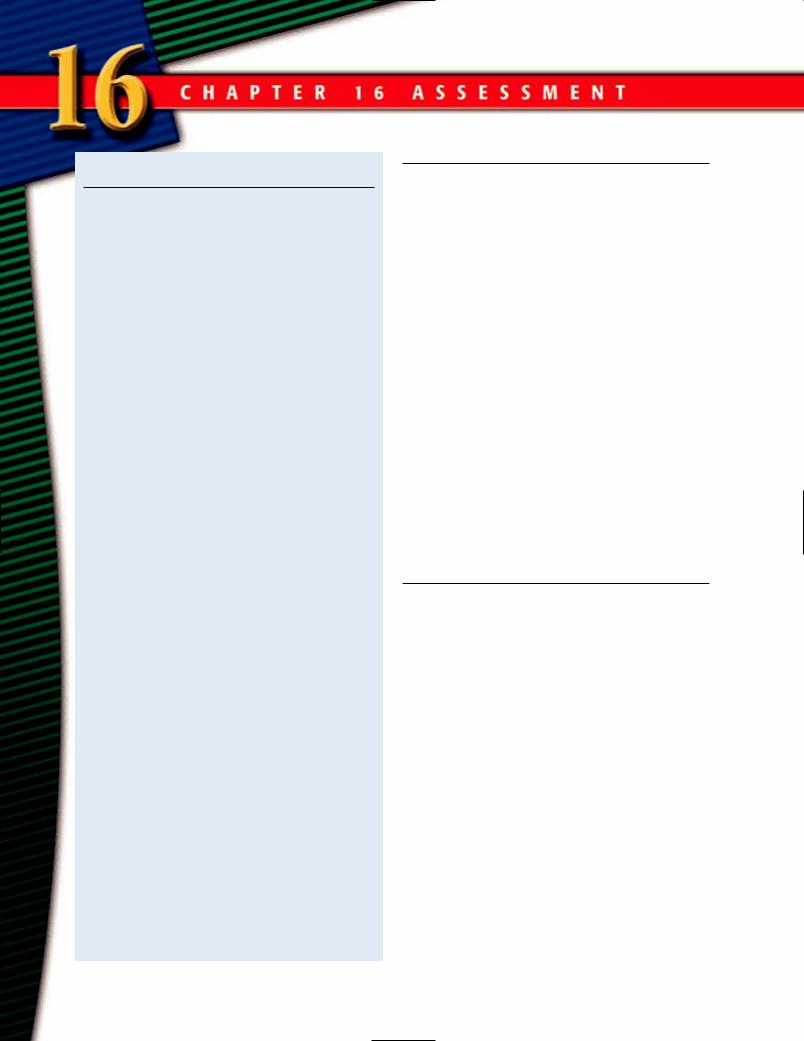
Chapter Summary
Be sure you know and remember the following key points from the chapter sections.
Section 1
Financial markets serve the purpose of channeling money from some people to other people.
A stock is a claim on the assets of a corporation that gives the purchaser a share (ownership) in the corporation.
Stocks are bought and sold on exchanges and markets such as the New York Stock Exchange.
Some people buy stocks for the dividends, which are payments made to stockholders based on a company’s profits, or to make money by buying shares at a lower price and selling at a higher price.
Section 2
A bond is simply an IOU, or a promise to pay, typically issued by companies, governments, or government agencies.
The three major components of a bond are face or par value, maturity date, and coupon rate.
The price that a person pays for a bond depends on market conditions: the greater the demand for the bond relative to the supply, the higher the price.
The yield on the bond is the coupon payment divided by the price paid for the bond.
Section 3
In a futures contract, a seller agrees to provide a particular good to the buyer on a specified future date at an agreed-upon price.
An option is a contract giving the owner the right, but not the obligation, to buy (a call option) or sell (a put option) shares of a particular good at a specified price on or before a specified date.
Economics Vocabulary
To reinforce your knowledge of the key terms in this chapter, fill in the following blanks on a separate piece of paper with the appropriate word or phrase.
1.If a person buys Spyders, she is buying a stock index, sometimes referred to as buying ______.
2.The ______ of a stock is the dividend divided by the closing price.
3.A(n) ______ is an IOU, or a promise to pay.
4.The ______ on a bond is equal to the annual coupon payment divided by the face value of the bond.
5.A(n) ______ bond is a bond issued by a state or local government.
6.The federal government issues bonds of different maturities. Bonds with a maturity of 2 to 10 years are called ______.
7.A(n) ______ is a contract in which the seller agrees to provide a particular good to the buyer on a specified future date at an agreed-upon price.
Understanding the Main Ideas
Write answers to the following questions to review the main ideas in this chapter.
1.What is the purpose of financial markets?
2.If you buy a stock are you lending money to the company issuing the stock, or are you buying ownership in the company?
3.Name three places where stocks are bought and sold.
4.Why did Charles Dow create the Dow Jones Industrial Average?
5.What does it mean if the Dow Jones Industrial Average rises by, say, 100 points in a day?
6.What are the two reasons to buy stock?
7.What determines the price of a stock?
8.What does it mean if someone invests in a mutual fund? In a stock index fund?
9.“The stock market may not be the best place to put your money in the short run, but it is a pretty good place to put your money in the long run.” What does this statement mean?
456 Chapter 16 Stocks and Bonds
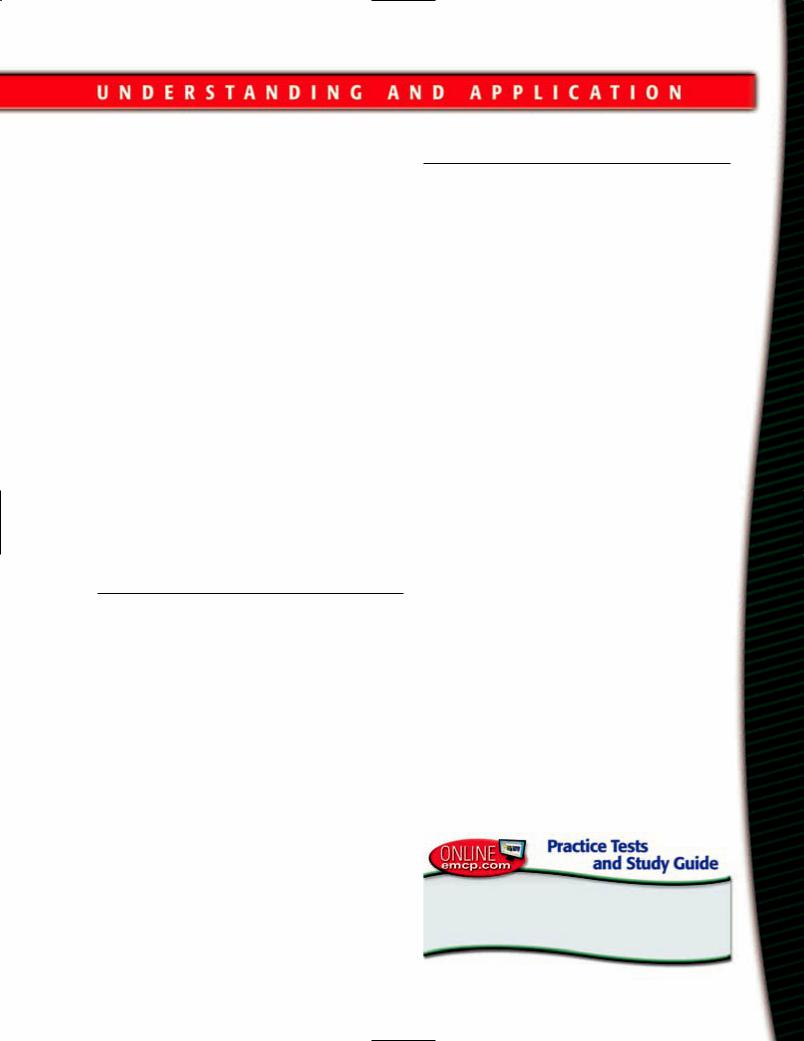
10.The PE ratio of a stock is 33. What does this number mean?
11.List and define the three major components of a bond.
12.Name two of the best known bond ratings services.
13.What determines whether a bond will have a good rating or a poor rating?
14.What is the yield of a bond?
15.Would you buy or sell bonds if you expected the interest rate to rise? Explain your answer.
16.If your city needed to raise money, what kind of bond would it issue?
17.What is a Treasury bill?
18.Suppose you are the type of person who likes to take chances, and you are not afraid of risk. Are you likely to receive higher or lower returns on your investments? Explain.
19.What is a futures contract? Give an example of a situation in which someone might buy such a contract. Why would this person buy the contract?
20.What is a call option? Why might someone buy a call option rather than stock shares?
Doing the Math
Do the calculations necessary to solve the following problems.
1.Assume that you own 1,250 shares of stock X. You just read in the newspaper that the dividend for the stock is $3.88 per share. What did you earn in dividends?
2.The closing price of a stock is $90.25. The stock is paying a dividend of $3.50. What is the yield of the stock?
3.The closing price of the stock is $66.40, and the net earnings per share is $2.50. What is the stock’s PE ratio?
4.The face value of a bond is $10,000 and the annual coupon payment is $850. What is the coupon rate?
5.Let’s say that a person buys a bond that matures in 10 years and pays a coupon rate of 10 percent. The face value of the bond is $10,000. How much money will the bondholder receive in the tenth year?
Solving Economic Problems
Use your thinking skills and the information you learned in this chapter to find solutions to the following problems.
1.Application. In Chapter 10 you learned how the Fed decides to change the money supply. Suppose that the Fed decides to increase the money supply. How do you think this action will affect the stock market?
2.Analysis. If bonds and stocks are substitutes, then what should we see happen as bonds offer higher returns?
3.Cause and Effect. Suppose that there is no cause-effect relationship between the current condition of the federal budget (deficit, balance, or surplus) and the Dow Jones Industrial Average. If so, what would we expect to see in the real world?
4.Writing. Write a one-page paper discussing the factors that you think will influence the stock market over the next several years. Explain how the factors that you have identified will cause people to want to buy more stocks, sell more stocks, or turn entirely to other types of investments.
5.Economics in the Media. Check the newspaper and find the Dow Jones Industrial Average (DJIA) for the most recent date.
6.Economics in the Media. Check the newspaper and find the current stock price for five of the 30 companies that compose the DJIA.
7.Economics in the Media. Find an article in the newspaper or a story on television news that mentions one of the following: stock market, bond market, put option, call option, DJIA, S&P 500, or NASDAQ. Discuss the contents of the article or story.
Go to www.emcp.net/economics and choose Economics: New Ways of Thinking, Chapter 16, if you need more help in preparing for the chapter test.
Chapter 16 Stocks and Bonds 457
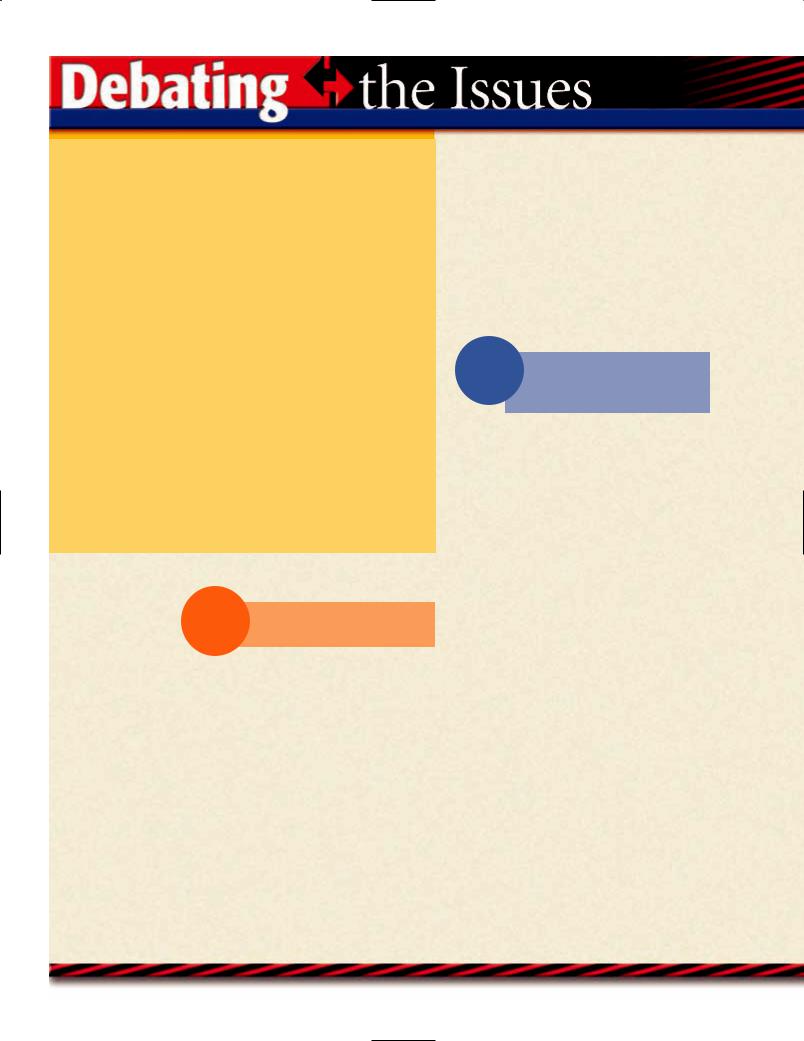
Is Free Trade the Best Policy for the United States?
Oklahoma can’t impose a tariff or quota on goods produced in Wisconsin, but the United States can and does impose tariffs and quotas on goods pro-
duced in other countries. For example, the United States currently imposes tariffs on garments, textiles, sugar, and many other goods produced in other countries. In other words, free trade exists among the states of the United States, but not among countries of the world. Do you think there should be free trade among countries, as there is among states? The issue has both opponents and proponents.
One day in November, two high school debate teams met and debated the issue of free trade. The question before each team was, Is free trade the best policy for the United States? Here is what four of the debaters, two from each team, had to say.
Alycyn Waldrop, Addison
High School Debate Team
When I go to the store to buy something new, whether it be a pair of running
shoes or a portable telephone, I want to buy the best product for the lowest price. That’s my objective, plain and simple. I have a better chance of meeting that objective living in a world of free trade than living in a world where countries impose tariffs and quotas on each other’s goods. Free trade maximizes competition, which is what guarantees me the highest quality goods at the lowest possible price.
Suppose there are 40 running shoe companies in the world, 10 in the United States and 30 in other countries. Am I, as a consumer, better off if all 40 companies sell
their shoes in the United States, or if only the 10 U.S. companies sell their shoes in the United States? The answer is obvious. I am better off when 40 companies, domestic and foreign alike, compete for my business, than when only 10 domestic companies compete for it. Free trade is the policy that maximizes choice for the consumer. It guarantees high quality goods at reasonable prices.
Mike Saunders, Spring
Valley High School Debate
Team
If every country in the world practiced free trade, then perhaps free trade would be
the best policy for the United States. But that’s not the case. That’s not the world we live in, and we shouldn’t pretend that it is. When other countries impose tariffs and quotas on our goods, that hurts our industries and our workers, and we should retaliate in kind.
Suppose the German government places a tariff on American cars imported into Germany. As a result, the price of American cars rises in Germany and Germans buy more German cars and fewer American cars. Since U.S. car companies sell fewer cars, they will have to lay off some of their workers. The people who are laid off are Americans, not Germans. In other words, some Americans will lose their jobs because the German government decided to impose tariffs on American cars.
Is this fair? Should the U.S. government practice free trade when another country doesn’t? Should our government sit back and do nothing as the German government puts Americans out of work?
I for one don’t think so. A policy of “give and take” would be more acceptable to me. If Germany practices free trade with
458 Unit V Trade and Investment
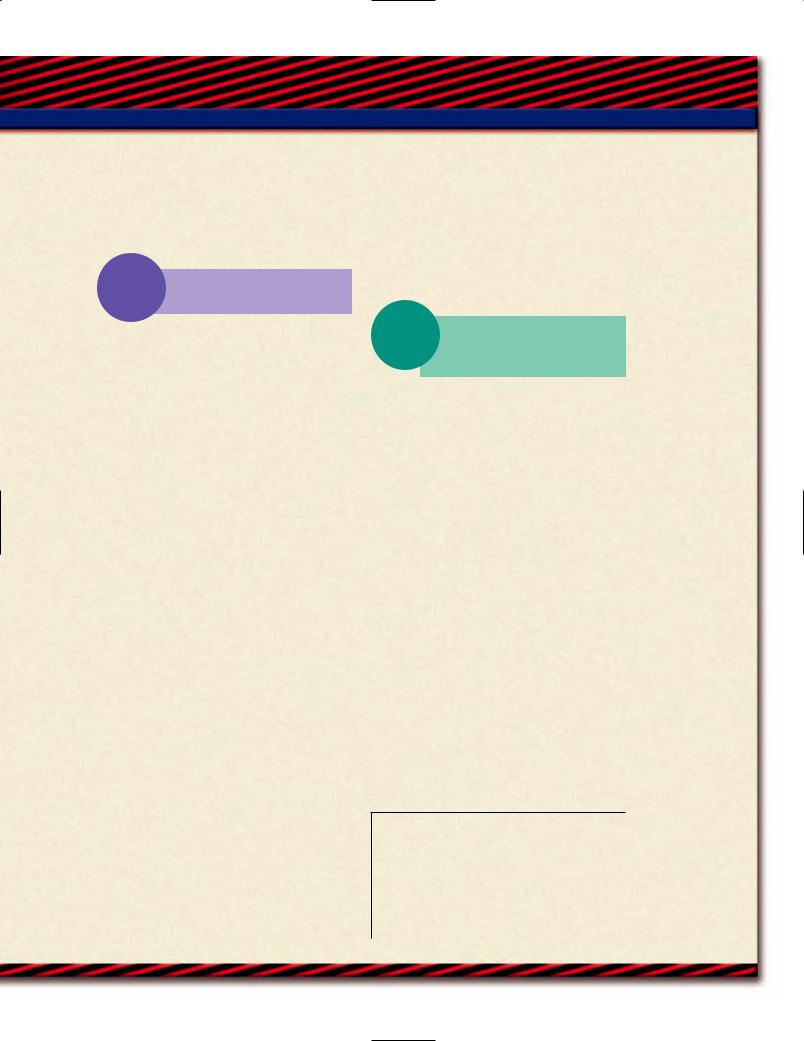
us, then we should practice free trade with Germany. But if Germany doesn’t practice free trade with us, then we shouldn’t practice free trade with them. We have to be realistic, and we have to protect ourselves.
Sylvia Minors, Addison
High School Debate Team
Idisagree. I think that practicing free trade is a little like practicing honesty—you should do it even if others don’t. If 10 peo-
ple tell lies, it doesn’t follow that the best thing you can do is tell a lie, too.
If most countries impose tariffs and quotas, it doesn’t follow that the United States should do likewise. The United States should practice free trade even if every other country in the world imposes tariffs and quotas on all products being imported. That’s because the United States prospers through free trade, even when other countries do not practice it.
Suppose there are five countries in the world. Four of the countries impose tariffs and quotas; one country, the United States, does not. Certainly foreign tariffs and quotas hurt U.S. producers and workers, but the U.S. government can’t make things better for our producers and workers by making our consumers worse off. And that is exactly what the U.S. government would be doing if it retaliated by imposing tariffs and quotas on foreign goods. Then, not only would U.S. producers and workers be hurt by foreign tariffs and quotas, but U.S. consumers would also be hurt by U.S. tariffs and quotas on foreign goods. If the choice is between hurting producers and workers or hurting producers, workers, and consumers, it is better to hurt as few people as possible.
Here’s what it comes down to: The best policy is for every country in the world to
practice free trade. The second best policy is for the United States to practice free trade, even if no other country in the world practices it. The worst policy is for the United States to impose tariffs and quotas on foreign goods simply because other countries impose tariffs and quotas on our goods.
Madison Golecke, Spring
Valley High School
Debate Team
United States policy shouldn’t protect the interests only of consumers; it
should protect the interests of consumers, producers, and workers. When other countries impose tariffs and quotas on U.S.- produced goods, those countries hurt our producers and our workers. These countries should bear the economic consequences. There must be a price for such actions, or these countries will continue to make themselves better off at the expense of American producers and workers. The higher the price of imposing tariffs and quotas on U.S.-produced goods, the less likely foreign countries will do so.
The way to ensure free trade is for the United States to give other countries a taste of their own medicine. If they practice free trade with us, then we should practice free trade with them. If they impose tariffs and quotas on our goods, we should do the same to their goods.
What Do You Think?
1.Should the United States practice free trade even if other countries do not? Explain your thinking.
2.Is the world moving toward or away from greater free trade? Give some examples from recent news stories to support your answer.
Unit V Trade and Investment 459
